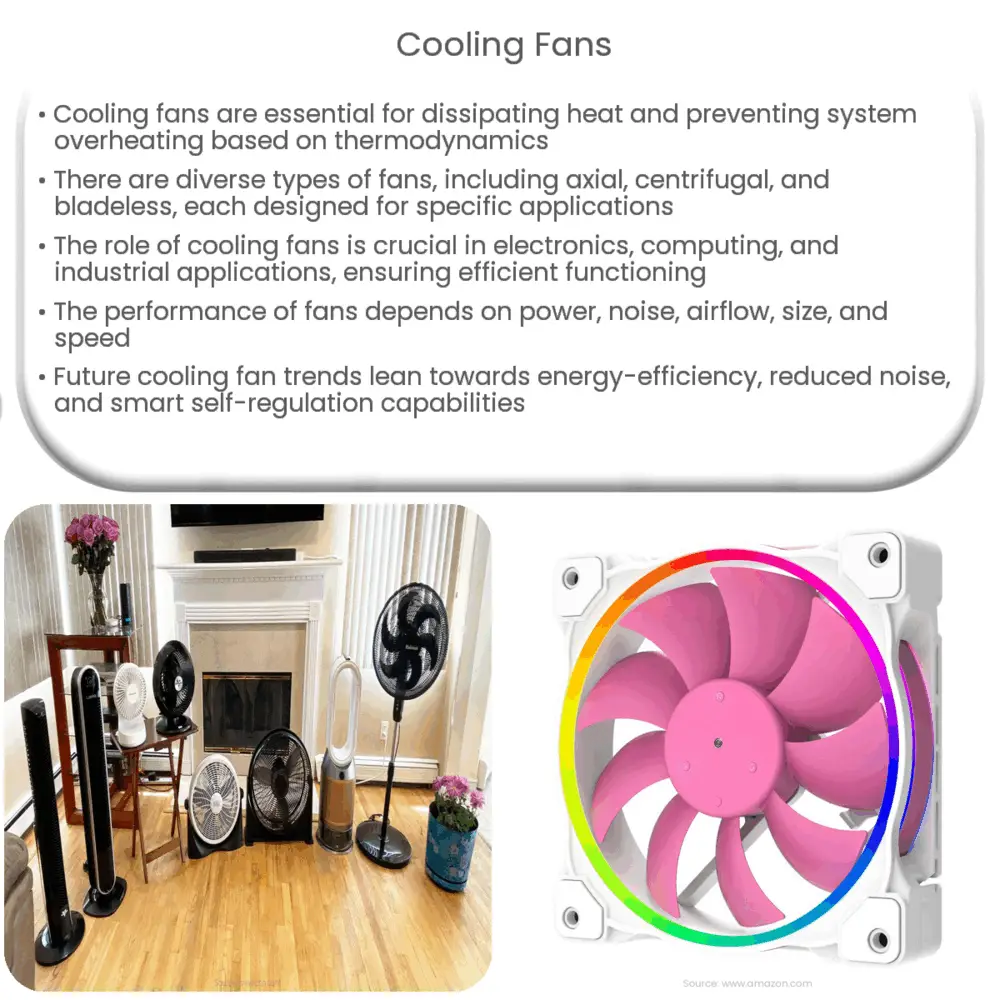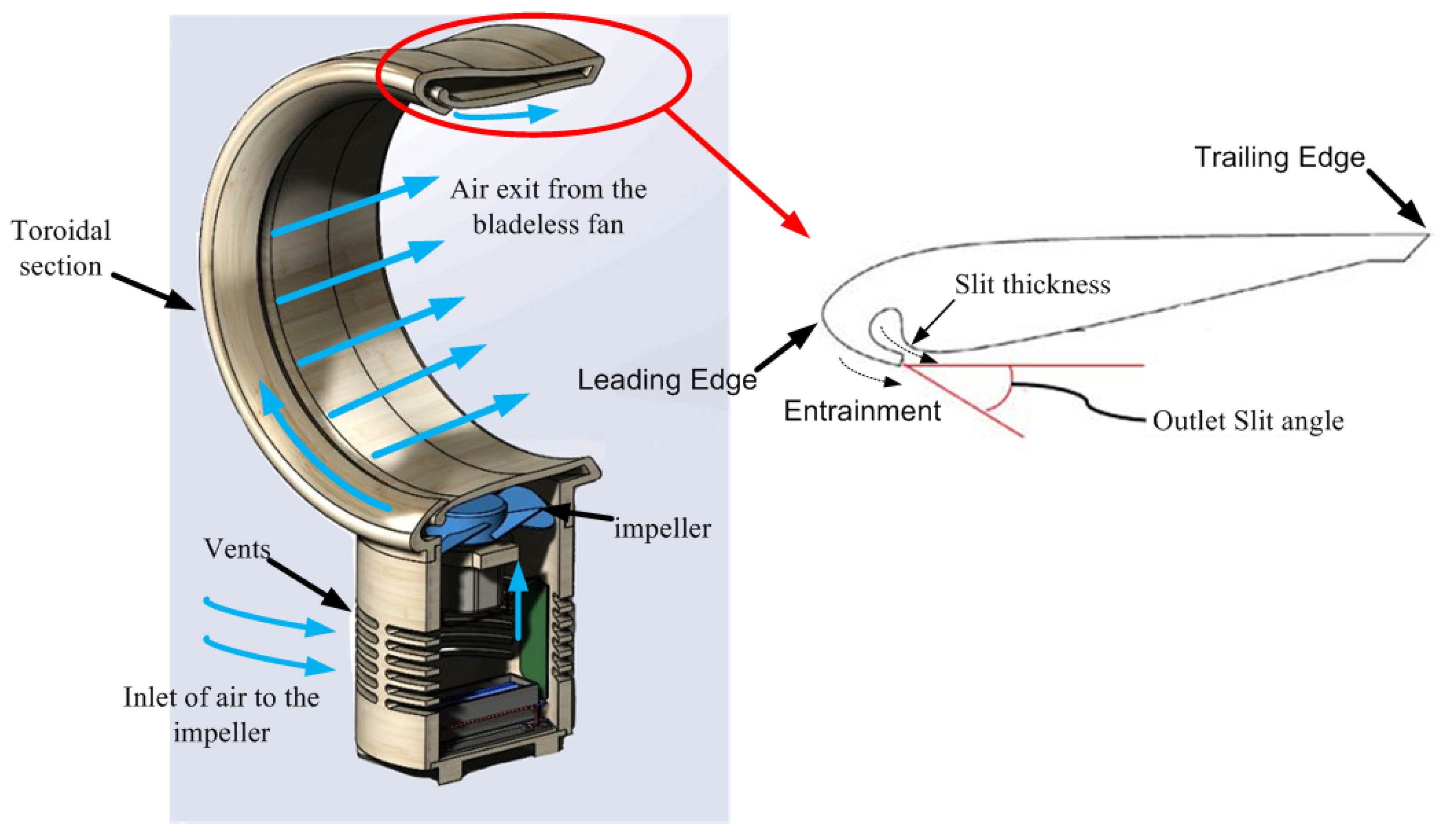Bladeless fans work by drawing in air at the base, which is then circulated and pushed out through a ring without visible blades. This airflow creation method helps to cool the room efficiently and quietly while consuming less energy compared to traditional fans.
The innovative design of bladeless fans has gained popularity due to their sleek appearance, energy efficiency, and noise reduction capabilities. By utilizing the Coanda effect and entrainment principles, bladeless fans provide a unique and effective way to circulate air in a room.
Despite being more expensive, the benefits of bladeless fans make them an attractive option for those seeking a modern and efficient cooling solution.

How Bladeless Fans Work
Bladeless fans operate by sucking in a small amount of air from the base and distributing it around the top ring, pushing it out through a thin slot. They are energy efficient, cool air faster, and produce less noise compared to traditional fans.
Entrainment
Bladeless fans use the concept of entrainment to draw air into the system.
Coanda Effect
The Coanda Effect creates a low-pressure area, increasing air circulation in bladeless fans.
Air Multiplier
The Air Multiplier technology amplifies and projects the airflow generated by bladeless fans efficiently.

Credit: indianexpress.com
Advantages Of Bladeless Fans
Bladeless fans offer several advantages that make them a popular choice for cooling solutions. Let’s explore some of the key benefits:
Energy Efficiency
Energy Efficiency: Bladeless fans are energy-efficient due to their innovative design that eliminates the need for blades. This results in reduced energy consumption compared to traditional fans.
Faster Cooling
Faster Cooling: Bladeless fans provide quick and efficient cooling by producing a continuous stream of smooth airflow. This design helps distribute cool air evenly and rapidly across the room.
Lower Noise Levels
Lower Noise Levels: Bladeless fans operate quietly, making them ideal for use in bedrooms, offices, or any quiet environment. The absence of noisy blades ensures a peaceful and comfortable cooling experience.
Disadvantages Of Bladeless Fans
Bladeless fans use a conventional bladed fan at the base to draw in air and expel it through a thin slot, distributing the airflow around the ring. Despite their innovative design, bladeless fans can be more expensive to buy and install, with potential additional costs for unique wiring or a new switch.
Higher Cost
Bladeless fans can be significantly more expensive than traditional fans due to their innovative technology and sleek designs. The additional cost can act as a barrier for consumers looking for a budget-friendly cooling option.
Installation Challenges
Some contractors may charge more for installing bladeless fans, especially if unique wiring or a new switch is needed. The installation process of bladeless fans may require additional expertise and time, adding to the overall cost and complexity.

Credit: www.mdpi.com
Comparison With Traditional Fans
Bladeless fans operate by sucking in air through the base, distributing it through a ring, and expelling it through a thin slot. They offer faster cooling, lower energy consumption, and reduced noise compared to traditional fans.
Energy Consumption
Traditional fans typically consume more energy compared to bladeless fans. Bladeless fans are designed to be more energy-efficient, utilizing a unique technology that reduces power consumption. The absence of blades eliminates the need for a motor that continuously rotates, reducing energy consumption significantly. This can lead to cost savings on electricity bills in the long run, making bladeless fans a more environmentally friendly option.Cooling Efficiency
Bladeless fans provide a more focused and consistent airflow compared to traditional fans. The design of bladeless fans allows for a smooth and uninterrupted flow of air, creating a strong and consistent breeze throughout the room. The lack of blades also eliminates the possibility of air turbulence, making the cooling effect more efficient and evenly distributed. This improved cooling efficiency ensures that you stay comfortable even during the hottest summer days.Noise Levels
Unlike traditional fans that often produce annoying noise due to the rotating blades, bladeless fans operate silently. The absence of spinning blades reduces the noise generated during operation, allowing for a quieter and more peaceful environment. This is especially beneficial for those who prefer a quiet and undisturbed sleep or need a quiet workspace. With bladeless fans, you can enjoy a cool and comfortable atmosphere without any distracting sounds. In summary, bladeless fans have several advantages over traditional fans. They consume less energy, provide better cooling efficiency, and operate silently. These factors make bladeless fans a more eco-friendly and superior choice for those looking for a more efficient and enjoyable cooling experience.
Credit: www.cnn.com
Frequently Asked Questions For How Do Bladeless Fans Work
What Are The Disadvantages Of Bladeless Fans?
Disadvantages of bladeless fans include higher cost to buy and install, especially with unique wiring needs.
How Does A Bladeless Fan Operate?
A bladeless fan operates by drawing air into the base, then expelling it through a top ring to create airflow. This mechanism uses less energy and cools air faster than traditional fans, while also producing less noise.
What Is The Science Behind The Bladeless Fan?
Bladeless fans work by sucking in a small amount of air from the base, which is then blown upwards into a channel in the top ring. The airflow is distributed around the ring and pushed out through a thin slot, creating a powerful breeze.
These fans use less energy and produce less noise compared to traditional fans.
What Are The Advantages Of A Bladeless Fan?
Bladeless fans have several advantages. They consume less energy and cool air faster compared to traditional fans. They also produce lower noise levels and have a sleek and modern design.
How Do Bladeless Fans Work?
The base of a bladeless fan contains a conventional bladed fan that sucks in a small amount of air from the perforations around the base. The fan then blows the air upwards into a channel in the top ring, which distributes the airflow around the ring and pushes it out through a thin slot around its inside circumference.
Conclusion
Bladeless fans work by drawing in air through the base and then expelling it through a thin slot around the top ring, creating a continuous stream of cool air. This design allows them to consume less energy, operate quietly, and cool air faster than traditional fans.
With their innovative technology, bladeless fans have become a popular choice for efficient and noise-free cooling solutions.